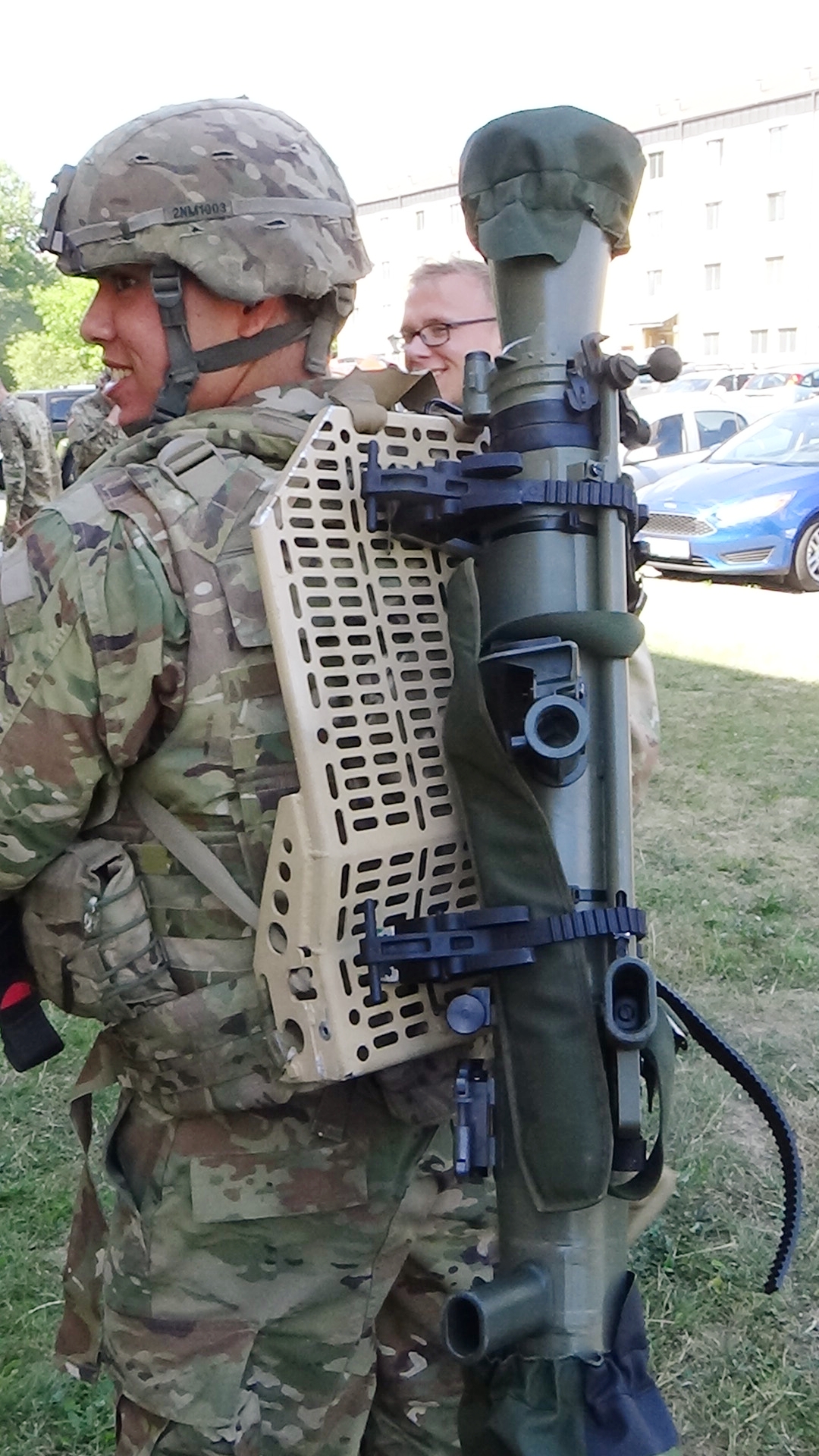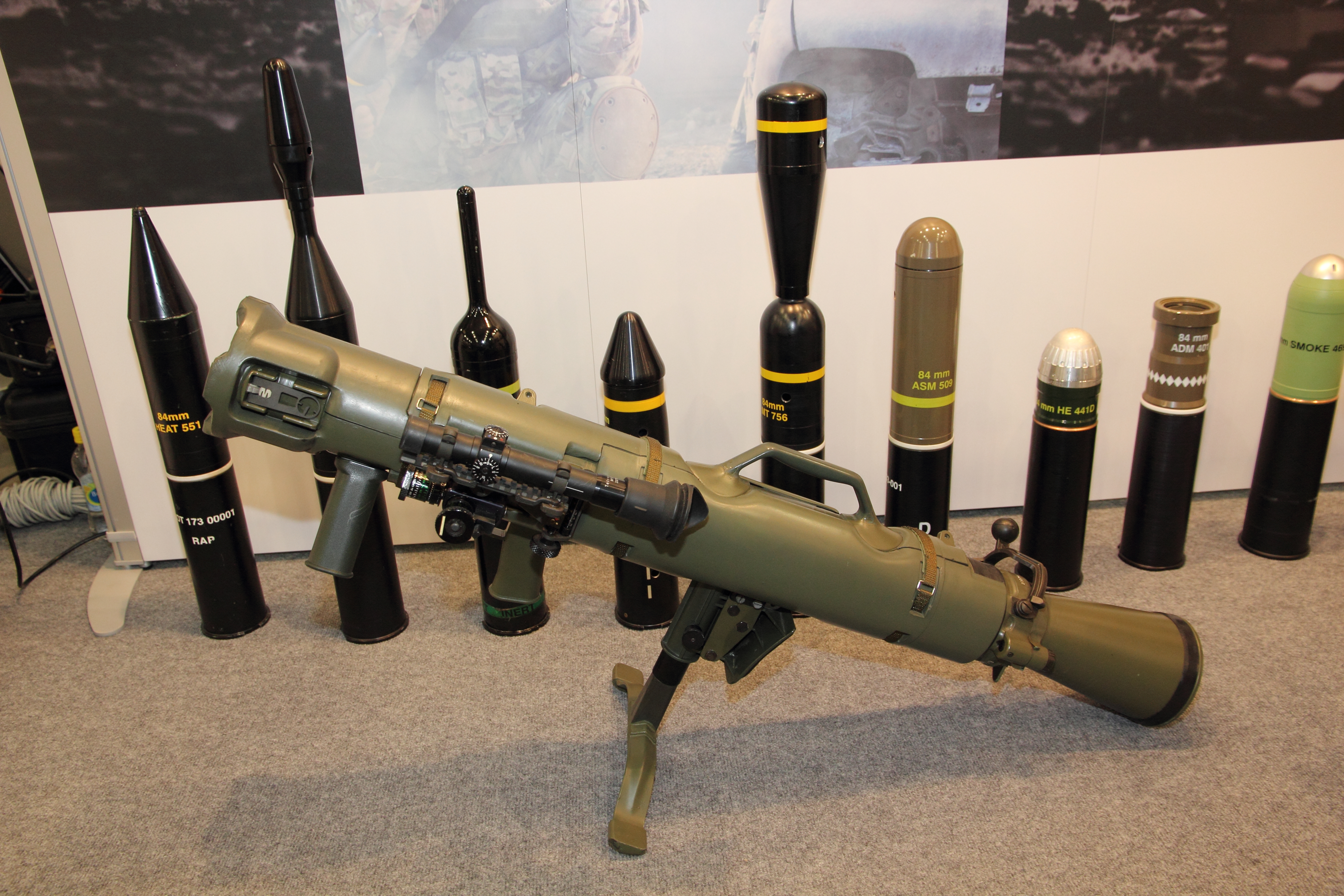Carl Gustav M3 - Swedish manufacturer Saab has signed an $87 million multi-year contract with the military to supply soldiers with new and improved 85mm M3E1 Carl Gustaf rifles for years to come.
Buckle up, soldiers, because we're about to enter the heyday of Carl Gustaf - in more ways than one.
Carl Gustav M3

Swedish manufacturer Saab has signed an $87 million, multi-year contract with the military to supply soldiers with new and improved 85mm M3E1 Carl Gustaf rifles without returns for years to come, the company announced Thursday.
Carl Gustav M3 Rpg
The latest update was approved by the military back in 2017 when it announced that every team would eventually receive the Carl Gustaf for combat use. The new version has a titanium shell and weighs 14.8 kilograms, apparently making it 28 percent lighter and much more ergonomic than its predecessors, the M3 and M3A1.
“The current system that the military uses is the AT4, which only allows soldiers to fire one shot, and then they have to fire the system,” the military stated back in 2017. “The M3E1 allows soldiers to use different types of ammunition, giving them greater capability on the battlefield ."
The M3E1 "ensures readiness on the modern battlefield with multi-role capabilities for a wide range of munitions, including destruction, anti-structure and anti-armor," Saab US CEO Erik Smith said in a statement.
Since announcing the official return of the Carl Gustaf, the military has sought to update its current arsenal of M3 recoilless rifles with the M3A1 Saab version, first announced in 2014.
Carl Gustaf' Weapon Extends Soldiers' Lethal Reach
The Army allocated more than $17 million to support the acquisition of 214 M3E1 rear rifles in its budget request for fiscal year 2021. It had requested 227 and 300 M3A1 systems in 2020 and 2019, respectively.
According to Army budget documents, the M331 is capable of "engaging, neutralizing, and destroying lightly armored vehicles, soft-skinned vehicles, open or defilade personnel, and field fortifications in both urban and open rural operational environments."
Although the 2017 requirements call for the Army to turn over only 1,111 new and improved M3E1 Carl Gustaf rifles without return, Army budget documents indicate a target procurement goal of about 2,460 total boom rifles by 2023.

The new, lighter launchers aren't the only improvements coming to service members sooner or later: Saab recently partnered with Raytheon for a series of guided flight tests on a new laser-guided munition, appropriately called the Carl-Gustaf Munition Guide.
Carl Gustav Recoilless Rifle
The company signed a $445 million framework contract with the military for both Carl Gustaf and AT-4 anti-tank munitions in 2019.
Jared Keller is the editor-in-chief of Task & Purpose. His writing has been published in Aeon, Los Angeles Review of Books, New Republic, Pacific Standard, Smithsonian and The Washington Post, among others. Contact the author here. Two (gunner and loader), but can be used by one user with a lower rate of fire.
The Carl Gustaf 8.4 cm recoilless rifle (Swedish pronunciation: [kɑːɭ ˈɡɵ̂sːtav], named after its original manufacturer, Carl Gustafs Stads Gevärsfaktor) is a Swedish 84 mm (3.3 in) caliber shoulder rifle originally re transferable. Royal Swedish Army Materiel Administration in the second half of the 1940s as an infantry close support and anti-tank weapon that was successful in exports around the world and is today a popular multi-purpose support weapon used by many. nations. The Carl Gustaf 84mm recoilless rifle is a light and affordable weapon that uses a wide variety of ammunition, making it very flexible and suitable for a wide range of missions.
The development of the original model began in 1946 as one of many recoilless rifle models of that era, based on the experiences of the previous Carl Gustaf 20mm rifle and the successful launch of manned rockets during World War II. such as Bazooka and Panzerschreck. The original model was manufactured by Carl Gustafs Stads Gevärsfaktori, run by Försvarets Fabriksverk (FFV) and the gun was designated 8.4 cm granatgevär m/48, (8.4 cm grg m/48 – "8.4 cm grade). rifle", model 1948) in Swedish service. FFV continues to develop the weapon for international markets and later merges with Saab Bofors Dynamics, which handles development and export today. Although similar weapons have generally fallen out of use, the Carl Gustaf is still in production and is still widely used.
Hobby Nuts Carl Gustav M3 Recoilless Rifle Maaws Od With Weathering
The weapon has many names around the world. It is most often referred to as "Carl Gustaf" or something similar for short. For example, British forces refer to it as "Charlie G", while Canadian forces often refer to it as "Carl G".
In the US military, it is officially known as the M3 Multi-Role Anti-Armor Anti-Personnel Weapon System (MAAWS) or the Ranger Antitank Weapons System (RAWS), but is often referred to simply as the "M3 Carl Gustaf" or simply. "Gustaf". ".
In the Swedish military service it is officially known as granatgevär 8, 4 cm m/48, m/86 and m/18 depending on the model (M1, M3, M4), but often called "GRG". " (gé-er-gé) after the abbreviation for their type designation (from granatgevär, meaning "class rifle"), as all models fire the same general ammunition and are widely used in the same way (although the 84mm grg m/18 can use programmable and guided ammunition ).

The basic weapon consists of a main tube with a Vturi recoil suppressor mounted on a shoulder bag with two grips at the front and a shoulder stock. The gun is equipped with iron sights, but usually the sight has a 3× optical sight with a field of view of 17 degrees (300 miles). The most modern versions of the Swedish rifle companies are equipped with the Swedish Aimpoint sighting system. Luminous front and rear sights are available for night-aiming iron sights, and the image intensification system can also be used.
A Civilian Instructor Loads A Tracer Training Round Into A Carl Gustav M3 84mm Recoilless Rifle
Gustaf can be fired from a standing, kneeling, sitting or prone position, and the Bipod can be attached to the front of the shoulder piece. A control handle called "Vturi lock" is used to move the hinged breech to the side for reloading.
The gun is normally operated by a two-man crew, a gunner who carries and fires the gun, and a loader who carries two capsules for a total of four rounds. One or two ammunition carriers may be assigned if heavy use is expected. During the firing procedure, it is the loader's responsibility to check the area behind the gun for people and obstacles that may interfere with recoil; this is necessary due to the inherent dangers of backstabbing. Anyone in the cone of a back blast can suffer severe burns, and solid objects close behind can reflect the blast back to the crew.
The overpressure or blast wave produced by Gustaf causes injuries and burns caused by the explosion to those behind the weapon and is dangerous up to 30 meters
Other studies have shown that there is no evidence of brain injury after repeated blasts or heavy weapons like the Carl-Gustaf.
Carl Gustaf Recoilless Rifle
The auxiliary guns were also often moved out of the extra pressure area so that they too could fire six rounds a day.
Sweden, the first Carl-Gustaf user, has a rule that both the shooter and assistant shooter are allowed to fire 20 full caliber shots per day.
The Carl Gustaf M1 was developed around 1946 by Hugo Abramson and Harald Jtz at the Royal Swedish Army Materiel Administration (Kungliga Arméförvaltnings Tygavdelning) and manufactured at Carl Gustafs Stads Gevärsfaktori, from which it derives its name. The development of the weapon system was preceded by the Carl Gustaf 20 mm recoilless rifle developed in 1940-1942 (Swedish name 20 mm pansarvärnsgevär m/42, abbreviation 20 mm pvg m/42). , it was quickly realized that the relatively small-bore solid steel petrator was obsolete for a shoulder-fired anti-tank weapon.

The 84 mm gun was first adopted by Sweden in 1948 as the 8.4 cm granatgevär m/48, fulfilling the same anti-tank role as the US Army's Singo, the British PIAT and the German Panzerschreck. Unlike these weapons, the Gustaf used a rifled barrel to stabilize its cartridges, unlike the fins used by other systems.
File:carl Gustav M3 Kokonaisturvallisuus 2015.jpg
Thanks to the recoilless firing system, the Gustaf could use ammunition that contained significantly more propellant and fire bombs at 290 m/s (950 ft/s), compared to about 105 m/s (340 ft/s) in bombs. Panzerschreck. and Bazooka and about 75 m/s (250 ft/s) for PIAT. The result was superior accuracy at long distances. The Gustaf can be used to engage larger stationary targets out to 700 meters (up to 2,300 ft), but the projectile's relatively low velocity limits attacks to moving targets at 400 meters (1,300 ft) or less.
The Gustaf was soon sold worldwide and became one of the most important anti-tank weapons at squadron level for many Western European armies.
The Carl Gustaf M2 was introduced in 1964 as an improved, lighter and slightly shorter version of the original M1 for the export market. It quickly replaced the original version.
Development of the Carl Gustaf M3 began in the 1980s, and was initially introduced to the Swedish Defense Forces as the \8.4 cm granatgevär m/86 ("8.4 cm grade rifle", model 1986).
Low Poly M2 Carl Gustav
Sig p365 tulster holster, sig p365 iwb holster, sig holsters p365, sig p365 sas holster, sig p365 xl holster, sig p365 hybrid holster, appendix holster sig p365, safariland holster sig p365, sig p365 belt holster, sig p365 holster, sig p365 purse holster, sig sauer p365 holster
0 Comments